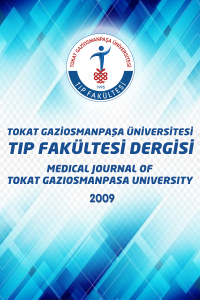Gebelik ve Laktasyonla İlişkili Osteoporoz
Gebelikte ve laktasyon süresince anneden fetüse ve bebeğe önemli ölçüde kalsiyum transferi gerçekleşmektedir. Teorik olarak bu durum annenin ileriki yaşamında osteoporoz gelişimi için bir risk teşkil etmektedir. Gebelik sırasında bağırsaklardan artmış kalsiyum emilimi, fetal kalsiyum ihtiyacının çoğunu karşılar. Ancak annenin kemik kaybı fetüs iskeletinin hızla mineralleştiği ve kalsiyum talebinin arttığı gebeliğin son aylarında olmaktadır. Anne sütünün üretimi için gereken kalsiyum büyük ölçüde annenin iskeletinden kalsiyum mobilizasyonu ile karşılanmaktadır. Gebelik ve laktasyonla ilişkili osteoporoz sıklıkla sırt ve bel ağrısı ile semptom verir. Doğum sonrası yapılan DEXA ve grafilerle tanı konabilir. Gebelik süresince kemik yıkım belirteçleri artmıştır. Gebelikle ilişikili nadir görülen osteoporoz nedenleri arasında öncelikle kalçanın geçici osteoporozu akla gelir ve gebeliğin son trimesterinde görülür. Kalça ağrısı ile semptom verir. Genellikle tedavi gerektirmeyip 6-12 ay içinde klinik ve radyolojik iyileşme gösterir. Gebelikte heparin kullanımını gerektiren durumlar da gebelikle ilişkili osteoporoz sebebi olabilir. Gebelik ve laktasyon ile ilişkili osteoporoz, gebelik ve laktasyon sonrasında kemik kitlesinin yeniden kazanılması ile kendini sınırlayan bir durumdur. Gebelik ve laktasyonda kalsiyum alımı kemik kaybını önlememektedir. Ancak düşük kalsiyum alımı (<600mg/gün ), vit D eksikliği olan veya adolesan annelerde kemik sağlığını korumak için kalsiyum ve vit D takviyesi yapılabilir. Epidemiyolojik çalışmalar gebelik ve laktasyonun osteoporotik kırık riski ile ilişkili olmadığını bildirmiştir. Bu derlemede amaçlanan yapılan çalışmalar eşliğinde gebelik ve laktasyon ile ilişkili osteoporoza genel bir yaklaşım
Pregnancy and Lactation Related Osteoporosis
During the pregnancy and lactation periods, significant amount of calcium is transferred from mother to fetus and infant. Theoretically, this occasion constitutes a risk for osteoporosis the mother’s future lifetime. In pregnancy, increased calcium absorption from intestines supplies predominantly fetal calcium need. However, the bone loss of mother occurs especially in the last months of pregnancy when increasing calcium demand and happening quick mineralization of fetus skeleton. The necessary calcium for mother’s milk production is provided mostly from the mobilization of calcium in mother’s skeleton. The osteoporosis related with pregnancy and lactation gives a symptom by backache and lower back pain frequently. This can be diagnosed with DEXA and radiographs postnatally. Osteoclasis markers increase during pregnancy. Transient osteoporosis of the hip is thought firstly between the causes of rarely encountered osteoporosis related with pregnancy and seen in the last trimester of pregnancy. This is symptomatic with coxalgie. Generally, there is no need to treat and it is healed clinically and radiologically in 6 to 12 months spontaneously. The situations that requiring heparin use can be also a cause of osteoporosis related with pregnancy. The osteoporosis related with pregnancy and lactation is a situation that limiting itself by regaining bone mass after pregnancy and lactation. Calcium uptake during pregnancy and lactation can not prevent the bone loss. Only, low calcium uptake (<600 mg/day), in adolescent mothers or mothers with vitamin D insufficiency, it can be suitable to supply vitamin D and calcium support to protect bone health in these mothers. It has been declared in the epidemiologic researches that pregnancy and lactation is not correlated with the osteoporotic fracture risk. In the light of the performed studies, the aim of this review is to get a general approach about the osteoporosis related with pregnancy and lactation.
